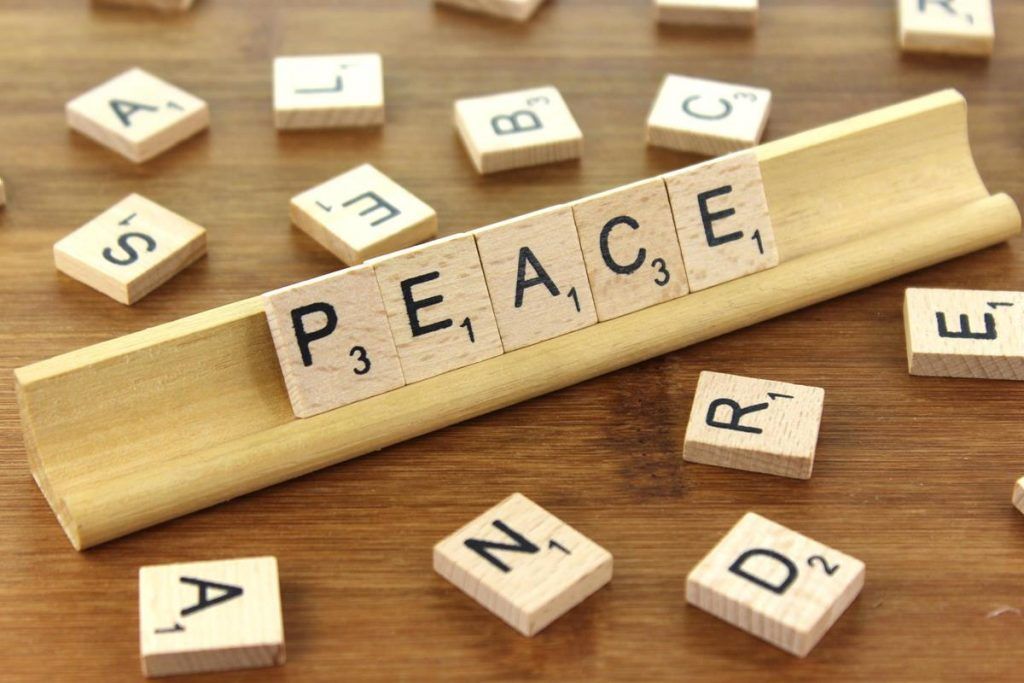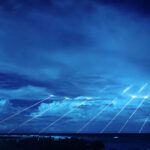Revisiting the case for no first use of nuclear weapons
By Gareth Evans | May 5, 2021
 Peace by Nick Youngson CC BY-SA 3.0 Alpha Stock Images
Peace by Nick Youngson CC BY-SA 3.0 Alpha Stock Images
Editor’s note: This article is adapted from a presentation the author gave at an international webinar hosted by the Geneva Centre for Security Policy and Parliamentarians for Nuclear Non-proliferation and Disarmament on 29 April 2021.
No first use is back on the global nuclear weapons campaign agenda, supported internationally by organizations like Global Zero and Parliamentarians for Nuclear Non-Proliferation and Disarmament. The issue has also been given new life in the United States by the election of an evidently sympathetic President Biden and the reintroduction into Congress by Senator Elizabeth Warren and Representative Adam Smith of their No First Use Act. Although the case for no first use has been well made before by Scott Sagan, Morton Halperin, and others, including Ramesh Thakur and John Holdren in this journal, it is timely, accordingly, to revisit the arguments that make it so compelling a policy choice.
A nuclear-armed state is said to have a no-first-use policy when it makes an explicit declaration that it will not use nuclear weapons either preventively or preemptively against any adversary (nuclear-armed or not) and keeps them available only for use or threat of use by way of retaliation following a nuclear strike against itself or its allies. A less robust, but still meaningful, formulation of essentially the same idea is a declaration that “the sole purpose of the possession of nuclear weapons is to deter the use of such weapons against one’s own state and that of one’s allies.” This was the formula President Obama was prepared to embrace in 2010 until, unhappily, he was dissuaded by some of his NATO and Asia Pacific allies—and it is the position that President Biden still seems to support.
There is a long way to go in getting universal buy-in to either formulation, given the present nuclear postures of all nine currently nuclear-armed states. Only China and India currently claim to be committed to no first use. The United States, in its 2018 Nuclear Posture Review, stated that it does not maintain a no-first-use policy on the grounds that US response options must remain flexible to deter both nuclear and non-nuclear attacks; Russia formally abandoned an earlier pledge in the 1990s; France has long maintained a first-use posture; the United Kingdom, Pakistan and North Korea have not ruled it out; and Israel, as ever, continues to refuse to confirm that it even has nuclear weapons.
Why not no use instead of no first use? There will always be those in the peace movement for whom any talk of no first use of nuclear weapons is unconscionable. It’s not no first use they want, but no use at all, under any circumstances. Those who take this position argue that campaign energy and resources should be totally directed to getting the Nuclear Weapons Prohibition Treaty, which is already supported by the great majority of states, universally embraced. They reject halfway measures which contemplate the possibility of something happening that must remain forever unthinkable.
In principle, this is a compelling argument. Nuclear weapons are not only the most indiscriminately inhumane ever devised, but any use of them is an existential risk to life on this planet as we know it. No one should waver for an instant in settling, as an endpoint, for anything less than global zero—the total elimination of nuclear weapons from the face of this planet.
But honesty demands acknowledgement that, right now, that end point is as far away as it has ever been. The Nuclear Weapons Prohibition Treaty has huge moral and emotional appeal and remains very important in building and reinforcing the normative case against the legitimacy of nuclear weapons. It has, however, no buy-in whatsoever from any of the nuclear-armed states or those that think they benefit from their protection. Nor will it have buy-in for the foreseeable future, for reasons which are not just ideological, geopolitical, and psychological, but go to verification and, above all, enforcement.
As unpalatable as this will be to some, and as overcautious as it will be to others, the only way forward, toward a nuclear-weapon free world—in this world as we find it, not what we would want it to be—is incremental. The process needs to be broken into manageable steps, focusing in the first instance on serious nuclear risk reduction, decreasing the salience of nuclear weapons in countries’ defense planning, and creating doubts in policymakers’ minds about not only the legitimacy but the utility of nuclear deterrence. If one wants real-world progress, one should never make the best the enemy of the good. That is, we should not take the view that settling for anything less than perfection is not necessary compromise but capitulation.
The priority now, as stated in the report of the International Commission on Nuclear Non-Proliferation and Disarmament, which I co-chaired with former Japanese Foreign Minister Yoriko Kawaguchi in 2009, is to direct immediate advocacy energy not into elimination, but rather minimization. In such a risk reduction agenda, achieving universal buy-in by the nuclear-armed states to no first use would be one of the four highest priorities.
Those priorities can be summarized as the “four Ds.” The first, nuclear doctrine—no first use—is given practical credibility by the next three: de-alerting—taking nuclear weapons off high launch-ready alert status; reduced deployment—drastically downsizing the number of those actively deployed; and decreased stockpiles—reducing overall numbers to around 2,000, down from the more than 13,000 now in existence.
A world with very low numbers of nuclear weapons, with very few of them physically deployed, with practically none of them on high-alert launch status, and with every nuclear-armed state visibly committed to never being the first to use them, would still be very far from perfect. But one that could achieve these objectives would be a very much safer world than we live in now.
Why not no limits instead of no first use? The case for no first use rests on two main pillars: keeping the option of first use is dangerous, and it is unnecessary. One could also conceivably invoke a further argument that any first use would be potentially illegal under international humanitarian law. But the relevant considerations here—necessity, proportionality, and so on—are just as applicable to retaliatory use as they are to first use, and as such don’t advance the present argument.
A no-limits option is dangerous. Retaining a first-use option is dangerous, both for wider global peace and security and often for nuclear-armed states’ own interests, in five main ways:
- A nuclear-armed state that keeps a first-strike option runs the risk of an adversary misreading its intentions and, fearing decapitation, launching a preemptive strike of its own, precipitating an otherwise wholly avoidable nuclear war.
- A nuclear-armed state that fears a surprise first-use attack from another which has kept open that option is more likely to put its own forces on extreme launch alert, thereby increasing the risk of human or system error or miscalculation causing a launch which precipitates the very catastrophe it is trying to avert.
- Refusing to adopt no first use encourages vertical nuclear proliferation, which incentivises potential adversaries to upgrade their own nuclear forces to deny their opponents a first-use advantage or gain one themselves. That way fosters nuclear arms races, with all the multiplication of risk these necessarily involve.
- Refusing to adopt no first use inherently encourages horizontal nuclear proliferation—adding new nuclear-armed states to the mix—with all the risks of both deliberate and accidental nuclear exchange that come with that. When a state with any kind of conventional capability insists that it needs nuclear weapons to deter or defeat non-nuclear attacks, it necessarily concedes that right to any other country fearing, or claiming to fear, such attack.
- Major-power refusal to embrace no first use can make it harder to wind back breakouts by others actually or apparently under way. Insisting that “all options are on the table,” as the Bush administration did with Tehran, played into the hands of Iran’s domestic hardliners and made negotiated nuclear risk reduction much more difficult to achieve. Arguably, a clear US no-first-use policy would also help alleviate at least some of the anxieties currently inhibiting progress on North Korean denuclearization.
A no-limits option is unnecessary. The dangers and risks associated with retaining a first-use option are not outweighed by any compelling security necessity, including for the major nuclear powers and those non-nuclear states who might believe they shelter under their protection:
- In the case of the major nuclear powers, especially the United States, they have immense conventional firepower, amply sufficient to deter or respond to chemical, biological, or other non-nuclear attacks.
- In the case of US allies, US conventional capability will be amply sufficient, when combined with their own capabilities, to protect them against any non-nuclear threat contingency for the indefinitely foreseeable future. What they want in these situations is a continuation of US “extended deterrence,” about which some of them will no doubt need to be constantly further reassured. But that simply does not have to be extended nuclear
- In the case of smaller nuclear powers who perceive themselves, accurately or otherwise, as facing threats from much larger neighbours (as with Pakistan against India) or from major powers bent on regime change (as the North Koreans claim), it will be harder to persuade them to give up the psychological comfort blanket their nuclear weapons provide. Likewise, it will be harder for them to formally relinquish ambiguity as to when they would use them. But even in these cases, keeping a first-use option makes little sense, given the intensity of the response, nuclear or otherwise, that this would generate. Kim Jong-un, for one, is acutely aware that to be homicidal would be suicidal.
Is no first use credible? The last-ditch argument usually made against no-first-use declarations is that they are simply not believable. The claim is that other states will behave as if they were never made, meaning that there will be no end to the dangers of ambiguity described above; and further, that in any event, in extremis, any state will simply do what it believes it has to do. But, as Scott Sagan convincingly argues, the first part of this critique understates the extent to which military leaders do, in practice, pay close attention to others’ declaratory policies. These signals of intent do shape the expectations of allies and adversaries alike, in what can either be a virtuous or vicious cycle.
What about the argument that any state could reverse, in an instant, any no-first-use declaration it made? That would be much harder to do, and the credibility of the declaration much harder to question, if the doctrinal commitment were to be accompanied by other major risk reduction measures, including the other three Ds: de-alerting, reduced deployments, and decreased stockpile numbers.
The bottom-line case for adopting no-first-use policies or their sole-purpose functional equivalents is not that they will, by themselves, bring an end to the terrible existential risk to life on this planet that will continue so long as any nuclear weapons remain. It is that they are an extremely important contributor to immediate nuclear risk reduction, to the necessary ongoing progress of delegitimising nuclear weapons in policymakers’ thinking, and to maintaining a global commitment to non-proliferation.
Above all, no-first-use policies and their sole-purpose functional equivalents are an absolutely necessary waystation on the road to complete nuclear disarmament. There is a long way to go in achieving a safer and saner nuclear-weapons-free world but getting the United States and the other reluctant nuclear-armed states to embrace no first use would be a great place to start.
Together, we make the world safer.
The Bulletin elevates expert voices above the noise. But as an independent nonprofit organization, our operations depend on the support of readers like you. Help us continue to deliver quality journalism that holds leaders accountable. Your support of our work at any level is important. In return, we promise our coverage will be understandable, influential, vigilant, solution-oriented, and fair-minded. Together we can make a difference.
















NFU, like TPNW, is a great thing to strive for. Personally, I work on warhead verification procedures applicable to TPNW. The chances that the UK, France, Pakistan, North Korea, or Russia would adopt NFU in the present geopolitical climate are slender. The chances that they would all do so in the foreseeable future are zero. They each perceive themselves as potentially up against adversaries possessing much greater conventional forces. A more achievable goal is Defensive Last Resort, which is already the explicit policy of Russia. It has the advantages of NFU discussed in this article, and could be universally adopted.… Read more »
A pledge of No First Use of Nuclear Weapons, on the face of it, sounds like a good thing. If every nuclear-armed nation took the pledge, goes the argument, the risk of nuclear weapons being used would be diminished. Some argue that a NFU pledge is worth only the air expended when one takes it. Because it is in force right up until the moment that it isn’t, the moment when a nation decides it is necessary to use its nuclear weapons—after all, the US and other nuclear states have the weapons for a reason, and the reason is more… Read more »